Well, maybe more.
1. Know the horizon line and the eye level. They amount to the same thing, except the horizon line is the furthest point in the distance (where the horizon would be if the world were completely flat and didn’t have mountains/lakes or buildings in the way) and the eye level is a line that runs exactly through the horizon line except it’s where you’ve placed the viewer of your image, so represents as close as you can get to the viewer.
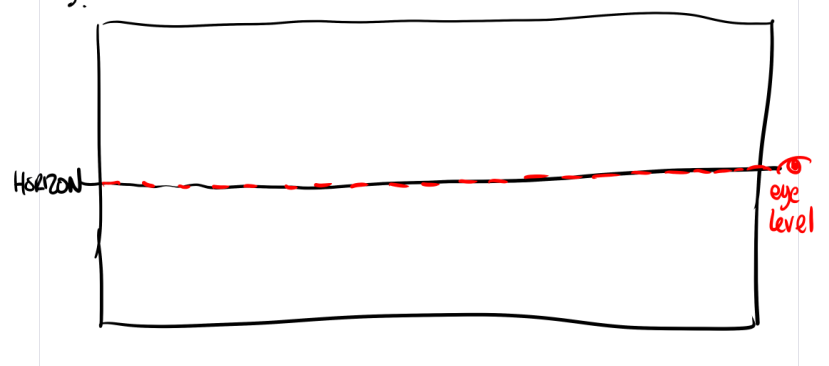
(A wobbly horizon and wobblier eyeline, but just imagine one is going right through the other!)
2. Things that are closer to the eye line are larger. Things that are further from the eye line are smaller! (I know, this is remarkable stuff!). When you’re dealing with drawings though, this isn’t quite enough, because, who’s to say that two squares floating in space, one smaller than the other in 2D aren’t just two different sized squares floating side by side? Then you need to bluff.
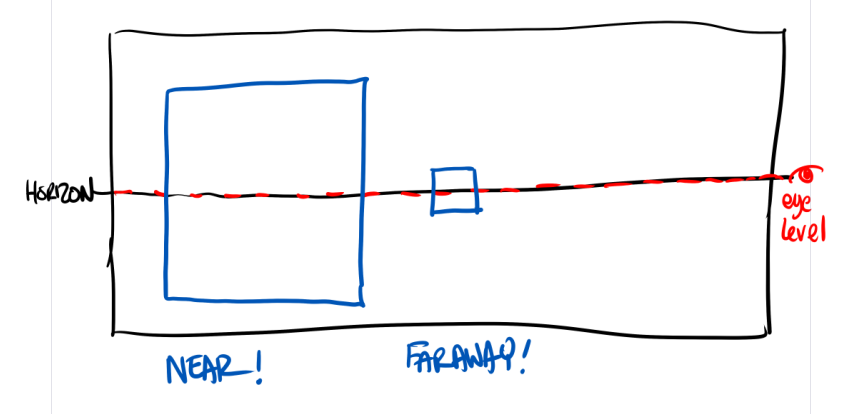
3. Overlapping helps your brain organise which items are in front of and behind other objects. Overlap a large square over a small square and it looks like the small square is much further away (join the squares up at the corner and voila! a cube!)
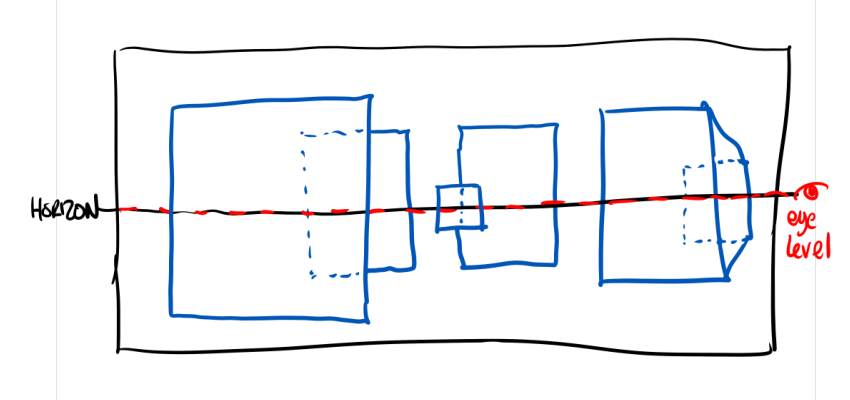
4. Use the eyeline as a way to hang things the same height as the eye line – so if your eyeline is 5’4″ (I’M SHORT – DEAL WITH IT) up then anything that hits that eyeline will appear 5″ 4′. It’s just the way our brains handle it.
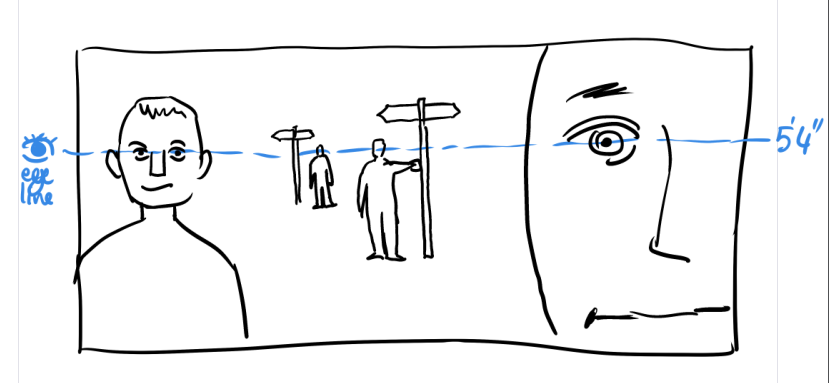
5. If something is taller or shorter than the eye line, figure out where the eyeline would intersect it and place all your objects where on the eyeline where the intersect.
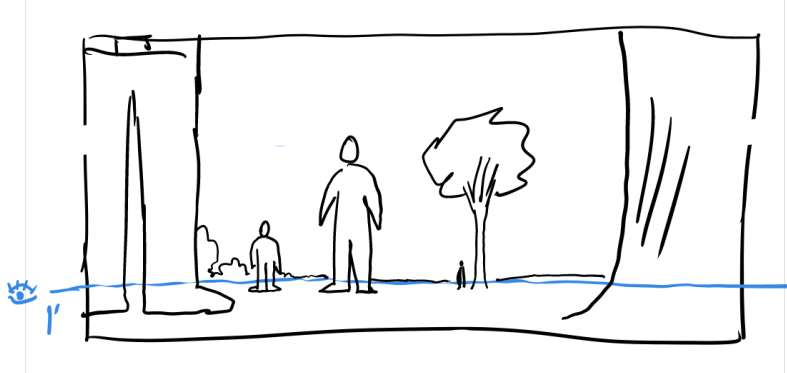
That’s it. You don’t need no steenking vanishing points.
I’m going to be delving into these topics in much more serious depth, BUT only for patreons, I’m afraid. If this is the kind of knowledge you want then sign up for the Backstage pass. I’ve limited numbers of $5 passes so if you’re in early you’re paying half. Otherwise it ten bucks.
I think perspective is a subject that too many people are afraid off because it very quickly becomes an exercise in technical drawing. You’re drawing hundreds of lines for guides before you get to do anything creative. But I’m pretty sure there’s an awful lot of stuff you can do without playing that game. Join me and you’ll see.
